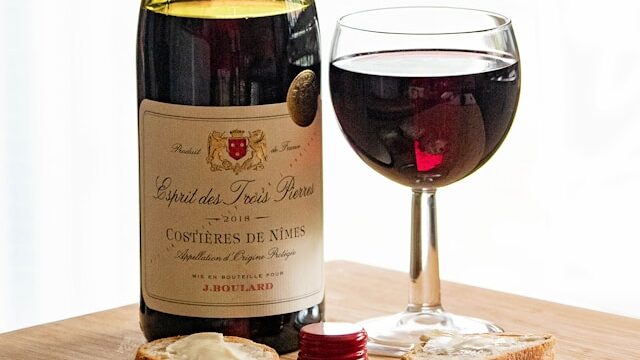Table of Contents
Ever wondered why reds and whites have their own unique glasses? It’s not just tradition—each glass is designed to bring out the best in its wine. Choosing the right glass can turn a good wine into a great experience. So, how do you pick the perfect one? Let’s dive into the differences between red and white wine glasses and discover how the right choice can enhance your favorite vino.
Red Wine Glasses
Red wine glasses are like cozy homes for rich flavors and aromas of your favorite reds. They have larger bowls and wider openings unlike their white counterparts, but why? It’s all about giving those complex reds the space needed to breathe and express themselves. Have you ever swirled a glass of red and been amazed by the scents that arise?
Each red wine glass is shaped to enhance the characteristics of different varietals. From the deep notes of a Cabernet to the delicate whispers of Pinot Noir, the right glass can elevate your wine from a mere beverage to a symphony of taste.
Characteristics of Red Wine Glasses
Red wine glasses are like the supporting actors that let the wine shine. The shape of the bowl is crafted to handle the complexity of reds, with a wider base that narrows slightly at the top. This design helps to trap the wine’s aromatic compounds, making each sniff as delightful as the last.
And it’s not just smell—these glasses are tailored to deliver the wine to the right zones on your tongue, ensuring that each sip is a balanced encounter with tannins, acidity, and alcohol content. Have you ever sipped from a red wine glass and felt the flavors unfold perfectly across your palate? That’s the magic of a well-designed glass.
The Generous Shape of Bordeaux Glasses
The Bordeaux glass is a favorite among red wine lovers. Its generous shape is specifically designed for wines with high alcohol content and robust flavors. The large bowl allows ample room for swirling, which invites more air into the wine, softening the tannins and enriching the taste.
Moreover, the tall sides of the Bordeaux glass direct the wine to the back of the mouth, maximizing the flavor of full-bodied wines. Have you ever taken a gulp from a Bordeaux glass and noticed how the shape of the bowl guides the wine to just the right place, enhancing its boldness and depth?
The Elegance of Burgundy Glasses
Burgundy glasses are the epitome of elegance, with their wide and spacious bowls. This shape is a nod to the delicate nature of Pinot Noir, the grape often found in Burgundy wines. The bowl’s design allows the subtle flavors to accumulate, highlighting the wine’s complexity and ensuring a delightful taste with every sip.
The larger opening of the Burgundy glass means the wine directly hits the tip of the tongue, where sweetness is best perceived, providing an immediate impression of the wine’s inherent fruitiness.

Specialty Red Wine Glasses
For the wine aficionado, specialty red wine glasses are a must. These glasses are tailored for full-bodied reds like Syrah or Merlot. They often feature a wide bowl but with a narrower opening, reducing the distance between your nose and the wine. This design concentrates the wine’s aromatic compounds, delivering a more intense aroma with each sniff. Have you ever inhaled deeply from a specialty glass and felt transported to a vineyard?
Cabernet Sauvignon wine glasses, for instance, are designed to invite more air into the glass, softening the wine’s robust tannins and making the flavors more approachable.
The Distinctive Syrah/Shiraz Glass
When it comes to the distinctive Syrah/Shiraz glass, its design is all about accentuating the bold flavors and spicy notes of these full-bodied reds. The glass’s slightly narrower rim directs the wine to the mid-palate, allowing you to fully appreciate its complexity.
The glass’s ample bowl also encourages the rich aromas to rise, creating an olfactory experience that complements the taste. Next time you pour a Syrah or Shiraz, notice how the glass’s shape enhances the smell and the flavor, making each sip a journey through the wine’s profile.
The Unique Features of a Merlot Glass
Merlot glasses stand out with unique features designed to showcase the velvety texture and fruity flavors of this beloved varietal. The moderate size and slightly tapered opening of the glass help to balance the fruit, tannins, and acidity, creating a harmonious taste experience.
With a Merlot glass, the wine is gently directed towards the tongue’s center, ensuring that its smooth character is savored with every sip. It’s the perfect companion for a relaxing evening, allowing the wine’s subtleness to shine.
White Wine Glasses
White wine glasses design is all about preserving the crispness and refreshing acidity that white wines are loved for. With smaller bowls and narrower openings than red wine glasses, they help maintain cooler temperatures and concentrate delicate aromas. Ever notice how a white seems more vibrant when served in the right glass?
Whether you’re sipping a light Pinot Grigio or a rich Chardonnay, the right white wine glass can make all the difference. Have you ever poured a white and felt the aromas leap up to meet you? That’s the power of a well-chosen glass, making every sip a celebration of flavor.
Features of White Wine Glasses
White wine glasses are designed to enhance the often subtle and nuanced profiles of white varietals. The bowl shape is typically smaller and more upright than red wine glasses, which helps to maintain the wine’s cool temperature and direct the bouquet straight to your nose. Have you ever taken a whiff of a chilled white and felt instantly refreshed?
The design also ensures that the wine hits the tip of the tongue where sweetness is detected, allowing you to fully appreciate the wine’s fruitiness and acidity. Next time you enjoy a white, notice how the shape of the glass can make those citrus or floral notes pop even more.
Design Elements of Chardonnay Glasses
Chardonnay, the most popular full-bodied white wine, has a specially designed glass to showcase its rich flavors and creamy texture. The glass’s wide bowl allows the wine to come into contact with more air, softening the acidity and allowing the complex flavors to unfold.
Even for unoaked Chardonnays, the wider bowl enhances the wine’s fruit profile and minerality, ensuring flavor is captured. Next time you pour a Chardonnay, pay attention to how the design elements of the glass contribute to a fuller, more rounded taste experience.
The Crisp Appeal of Sauvignon Blanc Glasses
The Sauvignon Blanc glass is a testament to precision design, with a tall, slender bowl that emphasizes the wine’s zesty acidity and vibrant fruit flavors. The shape directs the wine to the sides and tip of the tongue, where its crispness is best appreciated.
This glass’s design allows the grassy, herbal notes typical of Sauvignon Blanc to be savored without overwhelming the palate. It’s a glass that turns every sip into a refreshing encounter with one of the world’s most popular white wines. Next time you enjoy a Sauvignon Blanc, notice how the glass makes those green apple or lime notes even more invigorating.
Specialty White Wine Glasses
Specialty white wine glasses are the secret weapon for bringing out the best in full-bodied whites and high-acid wines. Glasses for full-bodied whites, like oaked Chardonnay, often have a larger bowl, allowing oxygen in the glass to mellow the wine and enrich the flavors. Have you ever noticed how a specialty glass can change how a white wine caresses your palate?
High-acid wines, on the other hand, are typically served at a lower temperature to retain their crispness. The specialty glasses for these wines often have a longer stem length, keeping your hand away from the bowl to prevent warming the wine. Have you ever held a glass by the stem and felt how it keeps the wine just the right kind of cool?
The Delicacy of Riesling Glasses
Riesling glasses celebrate the delicate balance of sweetness and acidity that Rieslings are known for. The narrow bowl and slightly flared lip direct the wine to the tip of the tongue, emphasizing the wine’s fruitiness and minerality.
With a Riesling glass, every taste explores the wine’s unique notes, from peach to honey to that characteristic petrol hint. Next time you indulge in a Riesling, pay attention to how the glass’s shape contributes to a refined and elegant tasting experience.
The Sophistication of Sparkling Wine Flutes
Have you ever noticed how champagne and sparkling wines are often served in those tall, slender glasses? That’s the sparkling wine flute, with its narrow bowl designed to preserve the wine’s effervescence and delicate aromas. The shape of the flute allows the bubbles to rise gracefully to the top, enhancing the visual appeal and concentrating the wine’s scent for a more pronounced aroma. Why do you think elegance is often associated with these glasses?
The flute’s long stem also plays a role in maintaining the ideal temperature, as it keeps your hand away from the bowl, preventing warmth from affecting the wine’s chill. Sparkling wine flutes are a testament to sophistication, catering to the palate and the eyes. Have you ever raised a toast with one? If so, you might have felt a touch of refinement with every sip.
The Great Debate: Red vs White Wine Glass
When it comes to red and white wines, each has unique characteristics that are enhanced by the shape of the glass. Red wine glasses typically have a wider bowl to allow the robust flavors and spicy aromas to develop, with Bordeaux glasses and Burgundy glasses offering a broad bowl and tapered shape, respectively. White wine glasses, on the other hand, have narrower openings than red wine glasses, which helps to concentrate the subtle aromas and maintain a cooler temperature. Have you ever wondered how the shape of the glass affects your wine’s taste?
Full-bodied red wines like a full-bodied Bordeaux or a spicy Petite Sirah benefit from the wider bowl of red wine glasses, allowing the wine to breathe and release its aromatic complexity. Meanwhile, white wines are best served chilled, and the white wine glass bowl is shaped to preserve the wine’s freshness and acidity. The walls of a white wine glass are often straighter and the bowl is narrower than those of their red wine counterparts. Have you experienced a difference in taste when using the appropriate glass for each type of wine?
Comparing Size and Shape
When selecting wine glasses, size and shape do matter. The larger bowls of red wine glasses allow full-bodied red wines to open up, letting ethanol vapors dissipate and the flavors of red wines to be savored fully. Have you noticed how the aromas and flavors become more pronounced when you give your wine a good swirl in a broad bowl? On the other hand, the narrower white wine glass is designed to concentrate the wine’s aroma, which can be more subtle, while also helping to preserve the wine’s freshness and acidity.
While both red and white wine glasses serve their unique purposes, the universal wine glass is gaining popularity for its versatility. This glass typically has a shape that falls between the wide bowl of red wine glasses and the narrower white wine glass, aiming to accommodate a range of wines. However, for the wine connoisseur, nothing beats the experience of using a glass perfectly suited to the wine’s character. Have you ever tried an all-purpose glass, and how did it compare to a specialty glass?

The Impact on Wine’s Temperature
Temperature control is essential in wine tasting, as it can significantly influence the wine’s flavor profile. White wine glasses typically have a shape that keeps whites at their best when served chilled, preserving the wine’s crispness. Red wines, on the other hand, are often served at room temperature, allowing their robust flavors and aromatic complexity to shine. Have you ever taken a sip of wine at the wrong temperature, and what was your reaction?
The length of the stem on a wine glass helps with temperature control. Stemmed glasses keep your body heat away from the wine, ensuring the temperature remains consistent. Next time you pour yourself a glass of wine, pay attention to how the temperature changes as you hold it.
Stemmed vs Stemless Wine Glasses
Stemmed glasses are the traditional choice for wine enthusiasts, with a long stem that keeps the warmth of your hand away from the wine. But have you ever tried stemless glasses? Stemless wine glasses offer a modern twist and can be easier to handle, but they may not provide the same temperature control as their stemmed counterparts.
While stemless glasses are undeniably convenient and less prone to tipping over, the absence of a stem means that holding the bowl directly could influence the wine’s temperature. In contrast, the stems on traditional glasses allow you to appreciate the wine without altering its intended serving temperature. When do you reach for a stemless glass, and does it change how you enjoy your wine?
The Modern Allure of Stemless Wine Glasses
Stemless wine glasses have surged in popularity, offering a contemporary look and a casual feel. Their design is not just about aesthetics; the shape of the bowl is crafted to enhance the wine, just as with traditional stemware. Have you ever hosted a gathering where stemless glasses were the highlight? They can be a conversation starter, blending seamlessly with modern table settings and relaxed atmospheres. Do you find stemless wine glasses more inviting for casual sipping?
Despite their modern allure, stemless wine glasses balance tradition with innovation, as the bowl’s shape still plays a critical role in the wine’s expression. Whether it’s a rounded bowl for reds or a more tapered one for whites, stemless glasses respect the wine’s profile. Next time you host an impromptu wine night, consider the effortless charm of stemless glasses. What’s your take on their rising popularity?
The Traditional Elegance of Stemmed Glassware
Stemmed glassware represents the epitome of wine tradition, with a grace that has stood the test of time. The thin rim, the length of the stem, and the shape of the bowl all contribute to the experience of savoring a fine wine. Have you ever felt the difference when drinking from a high-quality stemmed glass, with its perfect weight and balance? These glasses enhance the flavors and add a sense of occasion to each sip. Do you reserve stemmed glasses for special events, or do you indulge in their elegance regularly?
For those who appreciate the rituals of wine drinking, the traditional elegance of stemmed glassware is irreplaceable. The stems offer a sophisticated way to hold your glass without affecting the wine’s temperature, and the bowls are designed to amplify the wine’s aromas and flavors. Next time you pour a glass of full-bodied Bordeaux or a delicate Riesling, take a moment to appreciate the craftsmanship of stemmed glassware. How does using these glasses elevate your wine experience?
Versatility in Wine Glass Selection
When building your glassware collection, versatility can be just as important as specialization. With a range of wine glass shapes available, from red wine glasses to narrower white wine glass designs, you can choose the right vessel for every occasion. Have you ever been in a situation where you had to choose between different types of glasses for different wines? An all-purpose glass can be a great addition to your cupboard, ready for whatever bottle you decide to open. Do you value versatility in your glassware?
While all-purpose glasses serve their purpose well, there’s something special about having the right glass for the right wine. It’s like having crystal wine glasses that make a toast feel more celebratory or grappa glasses that bring out the unique flavors of this potent spirit. The choice of glass can be a reflection of your personal style and your approach to wine. Have you ever chosen a glass based solely on the type of wine you were drinking, and how did it enhance your experience?
All-Purpose Wine Glasses
All-purpose wine glasses are the Swiss Army knife of stemware, ready to tackle a variety of wines with ease. Their design is typically a happy medium between the broad bowl of red wine glasses and the narrower white wine glass, aiming to capture the best of both worlds. Have you ever used an all-purpose glass for different wines in one sitting, and how did it perform? Whether you’re a casual drinker or just starting to explore the world of wine, these glasses can simplify your choices without compromising too much on the experience.
The beauty of an all-purpose wine glass lies in its ability to adapt. It can handle the aromatic complexity of reds and the crispness of whites, making it an excellent choice for those with limited storage space or who prefer a minimalist approach. Next time you’re having a mixed wine flight at home, try using an all-purpose glass and see if it stands up to the test.
Importance of Specialty Wine Glasses for Connoisseurs
For the wine connoisseur, specialty wine glasses are a crucial part of the tasting experience. Each shape is designed to draw out the best qualities of a specific type of wine, from the wider bowls that allow reds to breathe to the narrower white wine glass that keeps whites crisp and cool. Have you ever tasted the same wine in different glasses and noticed a change in flavor? The contours of the glass can dramatically influence the wine’s profile, making glassware an important consideration for those who take their wine seriously.
While the casual wine drinker may not notice the subtleties that different glasses can bring to the table, for enthusiasts, it’s a pivotal aspect of enjoying wine. The warmth of your hand can alter the temperature of the wine if the glass isn’t designed to prevent it, affecting the body heat’s impact on the wine’s character. Have you experimented with different glasses to find your perfect match? Share your experiences and discover how others have navigated the world of specialty wine glasses.
Concluding Thoughts on the Importance of Proper Wine Glassware
In the dance of wine culture, the glassware we choose is not just a vessel; it’s a partner that leads the wine through its performance. Have you ever thought about how the warming of the wine can be slowed by the glass? It’s true! White wine glasses have longer stems to keep your hand away from the bowl, maintaining the serving temperature. And, when you swirl red wine in the glass, the generous visible surface allows it to breathe, unlocking aromas that enhance your experience.
Imagine bringing wine closer to their nose with a glass designed to highlight its bouquet. Does the scent transport you to a vineyard under the sun? Each sip is a journey, and the right glass is your passport. So, when selecting your next set of wine glasses, think about the role they play. Will they be the unsung heroes of your wine-tasting adventures? I invite you to share how your glassware has shaped your enjoyment of wine. After all, isn’t savoring every note what it’s all about?

Sed non elit aliquam, tempor nisl vitae, euismod quam. Nulla et lacus lectus. Nunc sed tincidunt arcu. Nam maximus luctus nunc, in ullamcorper turpis luctus ac. Morbi a leo ut metus mollis facilisis. Integer feugiat dictum dolor id egestas. Interdum et malesuada fames ac ante ipsum primis in faucibus.




